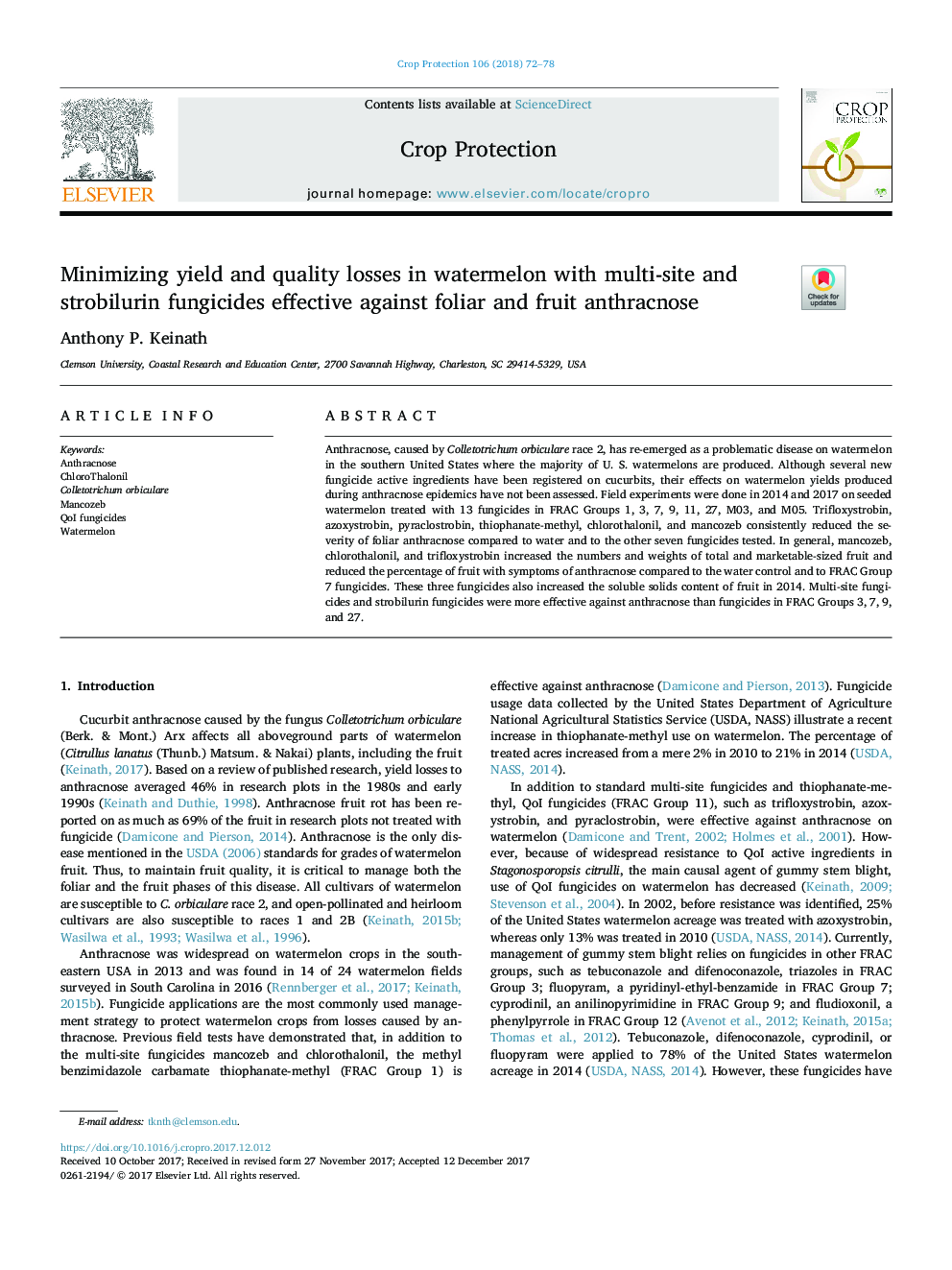| کد مقاله | کد نشریه | سال انتشار | مقاله انگلیسی | نسخه تمام متن |
|---|---|---|---|---|
| 8878242 | 1624281 | 2018 | 7 صفحه PDF | دانلود رایگان |
عنوان انگلیسی مقاله ISI
Minimizing yield and quality losses in watermelon with multi-site and strobilurin fungicides effective against foliar and fruit anthracnose
ترجمه فارسی عنوان
کاهش عملکرد و کیفیت خسارت در هندوانه با چند قارچ کش و استروبیلورین موثر در برابر آنتراکنوز برگ و
دانلود مقاله + سفارش ترجمه
دانلود مقاله ISI انگلیسی
رایگان برای ایرانیان
کلمات کلیدی
موضوعات مرتبط
علوم زیستی و بیوفناوری
علوم کشاورزی و بیولوژیک
علوم زراعت و اصلاح نباتات
چکیده انگلیسی
Anthracnose, caused by Colletotrichum orbiculare race 2, has re-emerged as a problematic disease on watermelon in the southern United States where the majority of U. S. watermelons are produced. Although several new fungicide active ingredients have been registered on cucurbits, their effects on watermelon yields produced during anthracnose epidemics have not been assessed. Field experiments were done in 2014 and 2017 on seeded watermelon treated with 13 fungicides in FRAC Groups 1, 3, 7, 9, 11, 27, M03, and M05. Trifloxystrobin, azoxystrobin, pyraclostrobin, thiophanate-methyl, chlorothalonil, and mancozeb consistently reduced the severity of foliar anthracnose compared to water and to the other seven fungicides tested. In general, mancozeb, chlorothalonil, and trifloxystrobin increased the numbers and weights of total and marketable-sized fruit and reduced the percentage of fruit with symptoms of anthracnose compared to the water control and to FRAC Group 7 fungicides. These three fungicides also increased the soluble solids content of fruit in 2014. Multi-site fungicides and strobilurin fungicides were more effective against anthracnose than fungicides in FRAC Groups 3, 7, 9, and 27.
ناشر
Database: Elsevier - ScienceDirect (ساینس دایرکت)
Journal: Crop Protection - Volume 106, April 2018, Pages 72-78
Journal: Crop Protection - Volume 106, April 2018, Pages 72-78
نویسندگان
Anthony P. Keinath,
